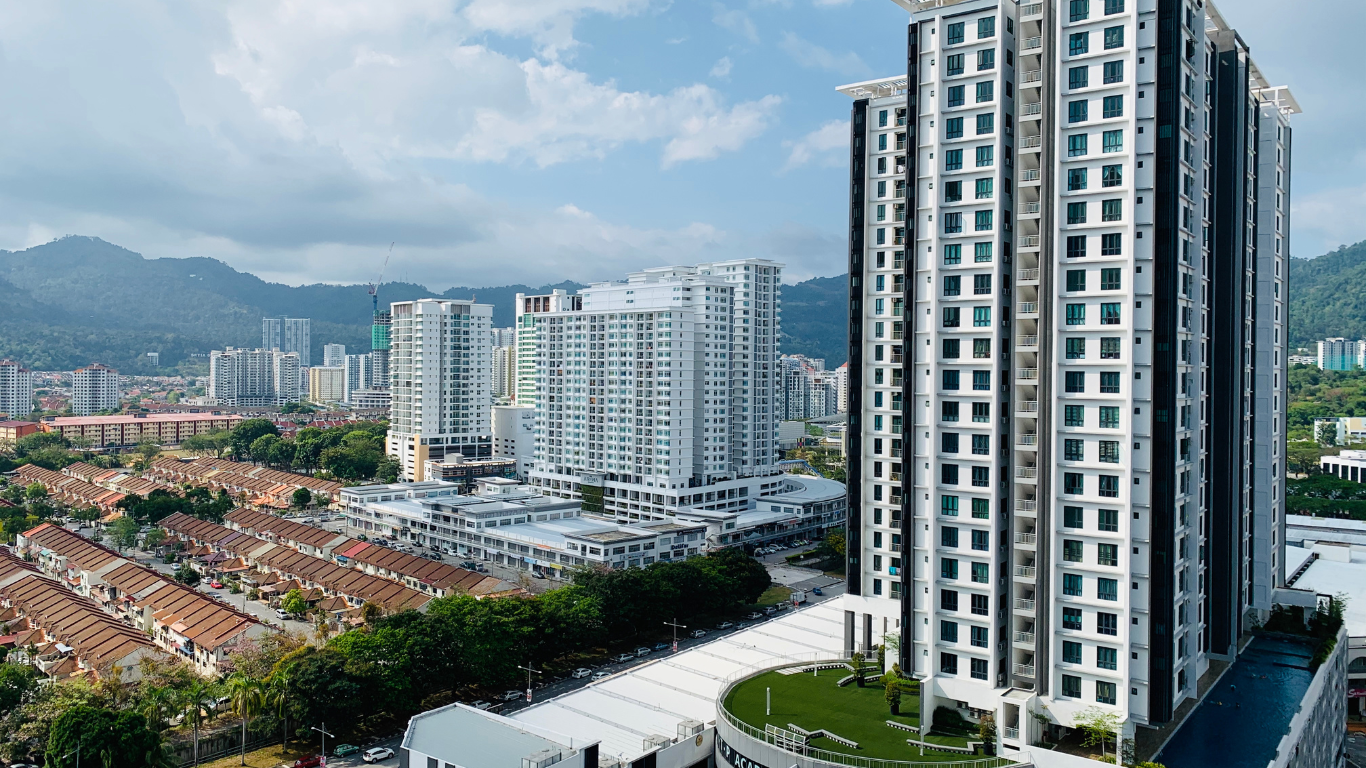Introduction
India, a land of diverse cultures, languages, and traditions, has witnessed remarkable urban growth over the past few decades. As the country strides towards becoming a global economic powerhouse, its cities are evolving into hubs of development, innovation, and modernity. In this blog post, we’ll explore some of the most developed cities in India, highlighting their economic significance, infrastructure, quality of life, and future potential. Whether you’re a researcher, student, investor, or someone curious about India’s urban landscape, this guide will provide you with authentic, in-depth information.
What Defines a Developed City?
Before we dive into the list of developed cities, it’s essential to understand what makes a city “developed.” Generally, a developed city is characterized by:
1. Economic Growth:
High GDP, strong industrial and service sectors, and a thriving business environment.
2. Infrastructure:
Well-developed transportation networks, modern amenities, and efficient public services.
3. Quality of Life:
High standards of living, access to healthcare and education, and low crime rates.
4. Sustainability:
Environmental consciousness, green spaces, and sustainable development practices.
5. Innovation:
Presence of technology parks, research institutions, and a culture of innovation.
1. Mumbai: The Financial Capital of India
Economic Significance
Mumbai, the capital of Maharashtra, is often referred to as the financial capital of India. Home to the Bombay Stock Exchange (BSE), Reserve Bank of India (RBI), and numerous multinational corporations, Mumbai contributes significantly to India’s GDP. The city’s diverse economy spans finance, entertainment, manufacturing, and IT services.
Infrastructure
Mumbai boasts an extensive network of roads, railways, and an international airport. The Mumbai Metro and Monorail have further enhanced urban mobility. The city’s port is one of the busiest in India, handling a significant portion of the country’s maritime trade.
Quality of Life
Despite being densely populated, Mumbai offers a high standard of living with access to top-tier healthcare facilities, educational institutions, and recreational amenities. The city’s vibrant culture and cosmopolitan lifestyle attract people from all over the country.
Future Potential
With projects like the Mumbai Trans Harbour Link and Navi Mumbai International Airport underway, Mumbai’s infrastructure is set to expand further. The city’s role as a financial and commercial hub will continue to grow, making it one of the most dynamic cities in India.
2. Delhi: The Heart of India
Economic Significance
Delhi, the capital of India, is not just the political center but also a major economic powerhouse. The city’s economy is diverse, with significant contributions from the service sector, including IT, telecommunications, hospitality, and tourism.
Infrastructure
Delhi is known for its extensive road network, efficient metro system, and well-connected railways. The Indira Gandhi International Airport is one of the busiest in India, serving millions of passengers annually. The city’s infrastructure is continually upgraded to meet the demands of its growing population.
Quality of Life
Delhi offers a blend of modern amenities and historical charm. The city is home to some of the best healthcare facilities, educational institutions, and recreational centers in India. However, challenges like air pollution and traffic congestion need continuous attention.
Future Potential
With the expansion of the Delhi Metro, smart city initiatives, and development projects like the Delhi-Mumbai Industrial Corridor (DMIC), Delhi is poised for further growth. The city’s strategic location and economic significance make it a critical player in India’s development story.
3. Bengaluru: The Silicon Valley of India
Economic Significance
Bengaluru, the capital of Karnataka, is renowned as the IT capital of India. The city hosts numerous tech parks, multinational companies, and startups, making it the hub of India’s tech industry. Bengaluru contributes significantly to India’s software exports and GDP.
Infrastructure
Bengaluru’s infrastructure is a mix of modernity and tradition. The city is well-connected by roads, railways, and an international airport. The Bengaluru Metro and ongoing infrastructure projects aim to improve urban mobility and reduce traffic congestion.
Quality of Life
Bengaluru offers a high standard of living, with a pleasant climate, green spaces, and a thriving cultural scene. The city is known for its educational institutions, healthcare facilities, and cosmopolitan lifestyle. However, rapid urbanization has led to challenges such as traffic congestion and water scarcity.
Future Potential
As Bengaluru continues to attract investment in technology, research, and innovation, its future as a global tech hub looks promising. Initiatives like smart city projects and the development of satellite towns will further enhance the city’s infrastructure and livability.
4. Hyderabad: The City of Pearls
Economic Significance
Hyderabad, the capital of Telangana, has emerged as a major IT and pharmaceutical hub in India. The city’s economy is driven by information technology, biotechnology, and pharmaceutical industries. Hyderabad is home to the largest bio-cluster in India and several global IT giants.
Infrastructure
Hyderabad boasts excellent infrastructure, with well-planned roads, a metro system, and an international airport. The city’s IT parks, like HITEC City and Genome Valley, are key drivers of its economy. Hyderabad’s historical sites and cultural heritage also contribute to its tourism industry.
Quality of Life
Hyderabad offers a high quality of life with a blend of modern amenities and historical charm. The city is known for its affordable housing, good educational institutions, and healthcare facilities. Hyderabad’s crime rate is relatively low, making it one of the safer cities in India.
Future Potential
With ongoing infrastructure projects, smart city initiatives, and the expansion of IT and biotech industries, Hyderabad is set to become one of the most developed cities in India. The city’s strategic location and business-friendly environment continue to attract investment and talent.
5. Chennai: The Gateway to South India
Economic Significance
Chennai, the capital of Tamil Nadu, is a major industrial and commercial center in South India. The city’s economy is diverse, with contributions from the automobile, IT, healthcare, and manufacturing sectors. Chennai is often referred to as the “Detroit of India” due to its thriving automobile industry.
Infrastructure
Chennai has well-developed infrastructure, including an extensive road network, railways, and an international airport. The Chennai Metro has improved urban mobility, and the city’s port is one of the largest in India, handling a significant portion of the country’s maritime trade.
Quality of Life
Chennai offers a high quality of life with access to top healthcare facilities, educational institutions, and cultural centers. The city’s rich cultural heritage, coupled with modern amenities, makes it an attractive place to live. However, challenges like water scarcity and traffic congestion need attention.
Future Potential
Chennai’s strategic location and industrial base make it a key player in India’s economic growth. With ongoing infrastructure projects and smart city initiatives, Chennai is poised for further development. The city’s role as a manufacturing and IT hub will continue to expand, attracting investment and talent.
6. Pune: The Oxford of the East
Economic Significance
Pune, located in Maharashtra, is known for its educational institutions and vibrant IT industry. The city’s economy is driven by information technology, education, manufacturing, and automobile industries. Pune has emerged as a key player in India’s startup ecosystem, attracting young entrepreneurs and innovators.
Infrastructure
Pune’s infrastructure is well-developed, with a robust road network, railways, and an airport. The city is expanding its metro network to improve urban mobility. Pune’s industrial areas, like Hinjewadi and Pimpri-Chinchwad, are key contributors to its economy.
Quality of Life
Pune offers a high quality of life with a pleasant climate, green spaces, and a vibrant cultural scene. The city is known for its educational institutions, healthcare facilities, and recreational amenities. Pune’s crime rate is relatively low, making it one of the safer cities in India.
Future Potential
As Pune continues to attract investment in technology, education, and manufacturing, its future as a major economic hub looks bright. Initiatives like smart city projects and the development of satellite towns will further enhance the city’s infrastructure and livability.
7. Ahmedabad: The Economic Powerhouse of Gujarat
Economic Significance
Ahmedabad, the largest city in Gujarat, is a major economic hub in Western India. The city’s economy is diverse, with contributions from textiles, chemicals, pharmaceuticals, and information technology industries. Ahmedabad is also known for its entrepreneurial spirit and vibrant startup ecosystem.
Infrastructure
Ahmedabad’s infrastructure is well-developed, with an extensive road network, railways, and an international airport. The city’s Bus Rapid Transit System (BRTS) is a model for efficient public transportation. Ahmedabad’s industrial areas, like Naroda and Vatva, are key contributors to its economy.
Quality of Life
Ahmedabad offers a high quality of life with a blend of modern amenities and cultural heritage. The city is known for its educational institutions, healthcare facilities, and recreational amenities. Ahmedabad’s crime rate is relatively low, making it one of the safer cities in India.
Future Potential
With ongoing infrastructure projects, smart city initiatives, and the expansion of industries, Ahmedabad is poised for further development. The city’s strategic location and business-friendly environment continue to attract investment and talent.
8. Kolkata: The Cultural Capital of India
Economic Significance
Kolkata, the capital of West Bengal, is a major economic and cultural hub in Eastern India. The city’s economy is diverse, with contributions from industries like information technology, manufacturing, and finance. Kolkata is also known for its port, which is one of the oldest and busiest in India.
Infrastructure
Kolkata’s infrastructure is a mix of historical charm and modern development. The city is well-connected by roads, railways, and an international airport. The Kolkata Metro, the oldest in India, is expanding to improve urban mobility. The city’s industrial areas, like Salt Lake and Rajarhat, are key contributors to its economy.
Quality of Life
Kolkata offers a high quality of life with access to top healthcare facilities, educational institutions, and cultural centers. The city’s rich cultural heritage, coupled with modern amenities, makes it an attractive place to live. However, challenges like traffic congestion and urbanization need attention.
Future Potential
With ongoing infrastructure projects, smart city initiatives, and the expansion of industries, Kolkata is set to become one of the most developed cities in India. The city’s strategic location and cultural significance continue to attract investment and talent.
Conclusion
India’s developed cities are a testament to the country’s rapid urbanization and economic growth. Each city, with its unique strengths and challenges, contributes to the nation’s overall development. As India continues to evolve, these cities will play a crucial role in shaping the country’s future. Whether you’re an investor, researcher, or simply someone interested in urban development, understanding these cities’ dynamics is essential.
As you explore these urban centers, you’ll find that they are more than just economic hubs—they are vibrant, living entities that reflect India’s diversity, resilience, and potential. With ongoing infrastructure projects, smart city initiatives, and a focus on sustainable development, India’s developed cities are set to lead the way in the global urban landscape.
FAQs
1. What are the top developed cities in India?
The top developed cities in India include Mumbai, Delhi, Bengaluru, Hyderabad, Chennai, Pune, Ahmedabad, and Kolkata.
2. Which city is the financial capital of India?
Mumbai is considered the financial capital of India.
3. Why is Bengaluru known as the Silicon Valley of India?
Bengaluru is known as the Silicon Valley of India due to its thriving IT industry and the presence of numerous tech parks and multinational companies.
4. What makes a city developed?
A developed city is characterized by economic growth, modern infrastructure, high quality of life, sustainability, and innovation.
5. Which city in India has the best quality of life?
Cities like Pune, Hyderabad, and Bengaluru are often ranked high in terms of quality of life due to their pleasant climate, green spaces, and modern amenities.
6. What are the challenges faced by developed cities in India?
Challenges faced by developed cities in India include traffic congestion, pollution, water scarcity, and rapid urbanization.
This guide aims to provide a comprehensive overview of the most developed cities in India, offering valuable insights for anyone interested in the country’s urban landscape. As these cities continue to grow and evolve, they will remain at the forefront of India’s journey towards becoming a global economic leader.




